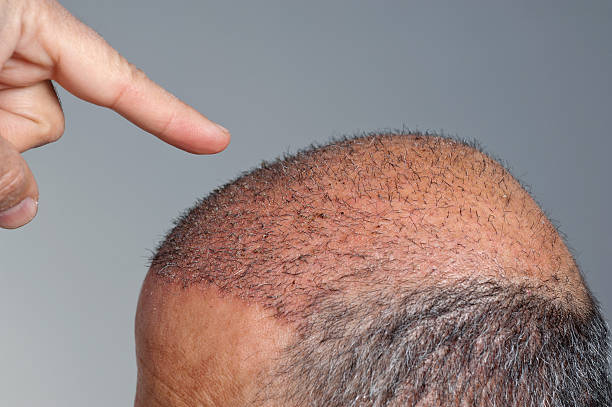Decoding the Science Behind Hair Transplants
Hair transplants have a surprisingly long history, dating back to the 19th century. The concept of hair transplantation was first introduced by a German medical student named Dom Unger. He came up with the theory that if a piece of scalp with hair was transplanted to a bald area, the hair would continue to grow. However, it wasn't until the 1930s that Japanese dermatologist Dr. Okuda began to implement these ideas, using small grafts of hair-bearing skin to restore hair on the scalps of burn victims.

In the 1950s, hair transplant surgery became more refined, with US dermatologist Dr. Norman Orentreich pioneering the use of ‘micrografts’, small clusters of hair follicles. By the end of the 20th century, hair transplant techniques had evolved to incorporate the use of follicular unit transplantation (FUT). This technique, which involves transplanting a strip of scalp from the back of the head to the front, is still in use today.
The Modern Landscape of Hair Transplants
In the past decade, hair transplants have become increasingly popular, with a global market worth over $8 billion in 2020. This surge in popularity can be attributed to a number of factors. Advances in surgical techniques have made the procedure more effective and less invasive, while societal shifts have made hair loss a more openly discussed issue. Additionally, the rise of social media has contributed to increased visibility for the procedure, with celebrities and influencers openly sharing their experiences with hair transplants.
The most common hair transplant technique used today is follicular unit extraction (FUE). This method involves the individual extraction of hair follicles from the back of the head, which are then transplanted to the balding area. FUE is praised for its natural-looking results and minimal scarring. However, it is also a more time-consuming and costly procedure compared to FUT.
The Science Behind Hair Transplants
Hair transplants work based on the principle of ‘donor dominance’. This concept, first proposed by Dr. Orentreich, suggests that hair follicles taken from areas of the scalp resistant to balding (the ‘donor’ area) will continue to grow when transplanted to a balding area. Essentially, the characteristics of the donor hair follicles are maintained, regardless of their new location on the scalp.
During a hair transplant, each hair follicle is transplanted with its sebaceous glands, nerves, and tiny muscles. This allows the transplanted hair to grow in a similar way to the existing hair, ensuring a natural look. The transplanted hair follicles enter a phase of temporary shedding after the procedure, but new hair growth typically begins after three to four months.
Evaluating the Impact and Reception of Hair Transplants
Hair transplants have greatly impacted the lives of millions of people worldwide. For many, the procedure has provided a permanent solution to hair loss, boosting self-esteem and body image. In a society where hair is often associated with youth, vitality, and attractiveness, the ability to restore natural-looking hair can have profound psychological benefits.
However, the reception of hair transplants is not universally positive. Critics argue that the procedure perpetuates unrealistic beauty standards and can lead to unnecessary medical risks. Furthermore, not everyone is a suitable candidate for a hair transplant, with factors such as age, hair type, and the extent of hair loss all playing a role in determining suitability.
Uncovering Unique Insights
While hair transplants are often associated with male pattern baldness, they can also be used to treat hair loss in women and to restore hair in other areas, such as the eyebrows and beard. Additionally, recent research has suggested a potential role for hair transplants in the treatment of scarring alopecia, a group of rare, inflammatory hair disorders that result in permanent hair loss.
Moreover, the development of bioengineered hair follicles represents a promising advancement in the field, with the potential to overcome the limitations of current hair transplant techniques. Researchers are exploring the possibility of creating an unlimited supply of hair follicles in the laboratory, which could then be transplanted to the scalp. This could revolutionize the field of hair restoration, offering a solution to those who lack sufficient donor hair for a traditional hair transplant.
In conclusion, hair transplants offer a fascinating blend of science, history, and societal impact. As the field continues to evolve, the future of hair restoration promises to be as intriguing as its past.




